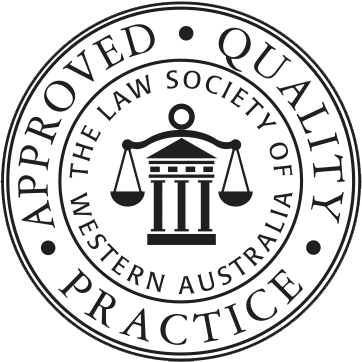Sperm Donor Laws – Who are the legal parents?
60–Second Summary
In our day and age, it is not uncommon for individuals to want to become a parent despite not being in a committed relationship (or if in a committed relationship and unable to conceive).
Becoming a parent can be achieved via artificial insemination, or by engaging a “sperm donor”. This donor might be someone known to the person, or they may be anonymous.
In making such a far-reaching decision, there will obviously be legal complexities which will need to be addressed.
Emotions often impair sound judgment. A recent decision of the High Court warns us against allowing emotions to interfere with decisions surrounding artificial insemination. The relevant judgment is Masson v Parsons [2019] HCA 21 (“the Masson and Parsons case”).
This decision has emphasised the importance of obtaining legal advice before conceiving a child, either with (or as) a known sperm donor, or with (or as) an unknown sperm donor. The implications are massive.
“Biological father” versus “parent”
Is it enough to be a biological father to then be legally considered to be a “parent”? Or does the biological father need to be more than just that?
The answer becomes relevant in determining whether someone may be involved in making important decisions concerning a child (which includes where they live), and if they have any obligation to pay child support.
Two of the objects of legislation in the area of family law (the Family Law Act 1975 and Family Court Act 1997) are as follows:
- children have the benefit of both “parents” having a meaningful involvement in their lives, consistent with their best interests; and
- “parents” fulfil their duties and meet their responsibilities concerning the care, welfare and development of their children.
How does one define the concept of a “parent” for this purpose? Unfortunately, the Family Law legislation does not provide us with a clear answer.
Facts of the Masson and Parsons Case
The biological mother was the mother of two children. She was not in a de-facto or married relationship at the time of conception of the elder child (“the child”).
The biological father of the elder child became so by way of artificial insemination arranged privately and informally with the mother.
The (separate and unconnected) biological father of the younger child was an anonymous sperm donor. The other relevant party to the proceedings was the mother’s partner.
The elder child’s biological father had always enjoyed a close and secure attachment with both children, as had the mother and her partner. Both children had always referred to the biological father as “Daddy”, and to the mother as “Mummy”. The children referred to both the father’s partner and the mother’s partner using their first names only.
Prior to conception and upon the birth of the first child, the mother and the father both intended the father to be involved in the life of the child (which included the child spending time with him, his being involved at the child’s school, his making important decisions concerning the child, and for the father to pay child support for the child). The father was present at the child’s birth, and even attended the mother’s baby shower.
The father’s name was on the child’s birth certificate. The mother later made an application for both children (and herself) to share the father’s surname. The mother’s female partner also changed her surname to that of the father.
The father subsequently commenced Family Court proceedings in an attempt to prevent the mother from acting on her intention to relocate with the child to New Zealand (with her partner and the younger child).
Decision at Trial
When the matter was heard at Trial, there were three main issues for determination:
- “Who is a parent?”
- “Who should have parental responsibility?”
- “What parenting arrangements would be in the best interests of the child?”
Who is a parent?
In determining who is a “parent”, consideration will be given by the Court to both biology and intention. Questions will be asked such as: Why did the father participate in the process? Was it to become a part of the child’s life and to effectively parent the child?
There was no dispute that the mother was a “parent” of the child. The issue was whether either, neither, or both the father and the mother’s partner were also parents by law- that is, who was “the other intended parent”?
A child born as a result of artificial conception procedures falls within Section 60H of the Family Law Act 1975. In accordance with this section, the question becomes whether the mother’s partner is “the other intended parent” (the relevance being that if she was the mother’s partner at the time of conception then she would be considered the other intended parent of the child). As the mother and her partner were found not to be in a de-facto or married relationship at the time of conception, the mother’s partner was not found to be a “legal parent”.
The intention and belief of a party to the process is a relevant factor in the outcome. In this case, there was no finding that the mother’s partner was involved in any of the decisions made or discussions had with the father.
At Trial, it was held that the mother and the father were the “legal parents” of the child (and not the mother and her partner). The Trial Judge considered the “ordinary” meaning of “parent” (given this word is not defined in the Family Law Act).
Who should have parental responsibility?
Responsibility as to the long term and day-to-day decisions concerning a child can be allocated to carers who are not biological parents and who have a relevant interest in the care and welfare of the child.
The question, in this case, was whether parental responsibility ought to lie with the mother and her partner, or with the mother and the father. At Trial it was held that sole parental responsibility should lie with the mother and her partner, with updates and invitations for input to be made to the father.
What parenting arrangements would be in the best interests of the child?
At Trial, it was further held that the mother ought to be restrained from relocating the principal place of residence of the child to New Zealand; that the child live with the mother and spend significant time with father.
Appeal by mother
The mother then appealed the decision of the Trial Judge to the Full Court of the Family Court of Australia.
The mother’s position was that, in determining who is the “parent” of a child regard ought to be had to State legislation (NSW in this instance) which addresses rules for artificial insemination procedures as between same-sex couples and stipulates that a sperm donor is not a “parent”.
The mother’s position was that her partner should be regarded as the “parent”. The father’s position was that he should be considered as the “parent” (in reliance upon the discretion within the Family Law Act – which is Commonwealth, not State legislation).
The mother’s position was accepted by the Full Court. It was held that the father was not the child’s “parent” (the effect of which was to permit the mother to relocate with the child to New Zealand).
Appeal by father
The father then appealed the Full Court’s decision to the High Court of Australia.
The decision of the High Court turned on constitutional considerations, and a determination of “who is a parent”.
The High Court ultimately determined that the NSW legislation was not applicable, and that the definition of “parent” should follow the ordinary meaning of “parent” (as accepted in contemporary society, and ought not automatically exclude a sperm donor). It was held that this was a question to be determined based on the facts and circumstances of each individual case.
In this case the father not only acted as a sperm donor, but he had a very close and engaging relationship with the child. This had always been the agreed intention. It was determined that the father was always considered to be the other intended “parent” – the effect of which was that the mother was not permitted to relocate with the child to New Zealand unless the father consented or there was a Court Order permitting her to do so. The mother was also to consult with the father on long-term parenting decisions concerning the child.
The High Court did not address what the Court’s position would be if a party was merely a sperm donor and not actively involved in the ongoing care of the child (or in decisions concerning the child). Whilst this leaves a level of uncertainty for donor parents, there might certainly be an argument that the simple fact that a person is a sperm donor does not necessarily mean they will be deemed to be a “parent”. The Court did, however, identify that in this case, the father was significantly more than just a sperm donor.
Documenting intention
Accordingly, before you conceive a child through artificial insemination, you should carefully consider:
- your intentions with regards to the extent of the donor’s involvement in the child’s life, including the following:
-
- the amount of time (if any) to be spent with the child;
- the extent to which the donor is to be involved in the making of important decisions concerning the child;
- the donor’s financial support of the child; and
- what arrangements are to occur if the child has a sibling unrelated to the donor.
- entering into a Donor Agreement to provide evidence of agreed intentions, and to specify whether the parties agree that the donor is to be a “parent” (or not) for the purposes of the relevant legislation.
A Donor Agreement will not be binding on the Family Court, however may go a long way to avoiding future conflict and could have persuasive influence, especially if the facts of the case align with the intention defined in the Donor Agreement.
Key Takeaways
- There is more to being a parent than simply donating genetic material.
- A sperm donor may be considered a “parent” if it can be shown that the intention was for the donor to play a parenting role, and that the donor had in fact taken on this role.
- Before you conceive a child through artificial insemination consider carefully what your intentions are, and be sure to discuss and document these with the donor.
- Consider entering into a Donor Agreement to provide clear evidence of your agreed intentions.
- If you have a child through an anonymous donor and you wish to avoid them later being defined as a “parent”, it is best that the child have no contact with the donor.
- Obtain legal advice from a family lawyer about the legal implications of either engaging a donor or agreeing to be a donor.
Get Expert Advice
If you are seeking more information about engaging a sperm donor (or agreeing to be a donor), please give DS Family Law a call on (08) 9486 1766 to arrange an initial consultation with one of our experienced family lawyers.
Let’s meet, and figure it out
For practical advice about what you should do next, please call to arrange a no-obligation initial consultation.

